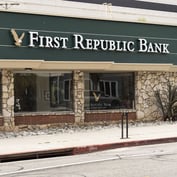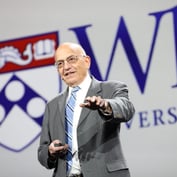What You Need to Know
- Some FOMC members may sound hawkish at next meeting, but Siegel said he was not concerned.
- Value-stock prices suggest marketing-beating returns in the long term, Siegel says.
- Siegel thinks Fed has banking troubles contained.
Wharton School economist Jeremy Siegel expects the Federal Reserve to raise interest rates by 25 basis points when the central bankers meet next week and for Chairman Jerome Powell potentially to signal a pause in further hikes following the Silicon Valley Bank collapse.
“I do think Powell’s going to do a 25 basis-point increase but signal strongly without committing that there will be a pause after that,” Siegel, senior investment strategy advisor at WisdomTree and Wharton emeritus finance professor, said on a WisdomTree webcast Thursday.
He suggested the bank collapse will lead to a chill in lending equivalent to one or two Fed tightening rounds and said he doesn’t expect the stock market to decline much from here.
“I think the Fed has this contained and this is going to knock some sense into Jay Powell’s head,” Siegel said.
Because the Federal Open Market Committee will hold a quarterly meeting on March 22, members will make their “dot plot” projections for the Fed’s benchmark interest rate, he said, cautioning that many FOMC members “are going to be more aggressive than what the market thinks” when the panel meets and holds a press conference Wednesday.
That hawkishness will scare the market, Siegel predicted, downplaying the significance of those data-dependent projections. “All those projections are on tissue paper and don’t mean very much at all,” he said.
The market might see a little sell-off at 2 p.m. Wednesday, followed by a possible rally at 2:30 when Powell speaks, Siegel said.
The collapsed Silicon Valley Bank “violated Banking 101, Week Two, which is never borrow short and lend long,” Siegel said, as that position puts an institution in trouble if short-term rates climb higher than long-term rates. He said it was beyond his imagination that the bank put deposits into Treasury bonds with 10- and 20-year durations.
Had SVB put those deposits in 90-day T-bills and just rolled them over, “there would be no story whatsoever, there would be no crisis, there would be no run … it was a gross mistake by management,” Siegel said.
“They should have gone to the Fed immediately when they saw a shortfall” and established a line of credit with Fed, or made a similar move to troubled First Republic, which has received a big cash infusion from other banks, he said.
“It is quite mind-boggling to me,” Siegel said.









 March 17, 2023 at 04:20 PM
March 17, 2023 at 04:20 PM








